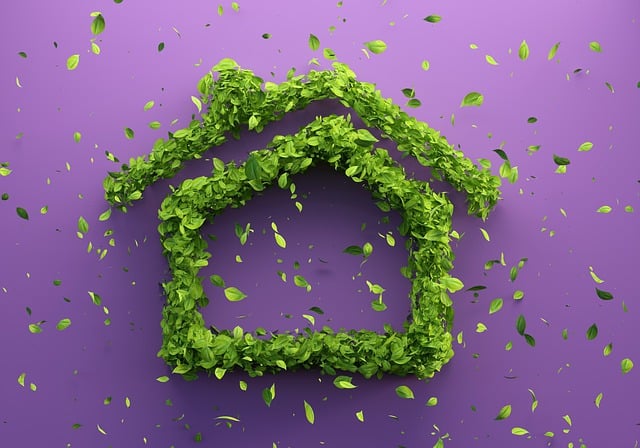Low-impact landscaping offers a sustainable approach to transform outdoor spaces, benefiting both the environment and homeowners. By focusing on native plant species, strategic water management, and minimal soil disturbance, these eco-friendly home upgrades reduce water consumption, cut chemical use, and enhance biodiversity. They provide long-term cost savings, contribute to property resilience against climate change, and offer visual appeal with their robust root structures that improve soil stability and air quality. Adopting water conservation strategies like low-flow sprinklers and rainwater harvesting systems further reduces environmental impact. Integrating eco-friendly home renovations with low-impact landscaping fosters sustainability, reduces water usage, minimizes carbon footprints, and supports local wildlife.
Creating a sustainable property doesn’t have to mean sacrificing beauty or functionality. Low-impact landscaping, rooted in ecological principles, offers an effective approach for environmentally conscious homeowners. This practice prioritizes preserving resources while fostering robust ecosystems. From selecting native plants to implementing water conservation strategies, this article guides you through transformative eco-friendly home upgrades that enhance your space and benefit the planet. Discover how to create a harmonious blend of aesthetics and sustainability with low-impact landscaping.
Understanding Low-Impact Landscaping: Principles and Benefits
Low-impact landscaping is an approach that focuses on preserving and enhancing natural ecosystems while creating aesthetically pleasing outdoor spaces. It involves selecting native plant species, strategic water management, and minimizing mechanical disturbance to the soil. By embracing these principles, homeowners can transform their properties into sustainable oases that contribute to a healthier environment.
The benefits of low-impact landscaping are multifaceted. It reduces water consumption by mimicking natural water cycles, cuts down on chemical use, and promotes biodiversity by providing habitats for local wildlife. These eco-friendly home upgrades not only lower environmental impact but also offer long-term cost savings through reduced maintenance and utility bills. Moreover, they contribute to the overall resilience of the property against climate change, ensuring a more sustainable future for both the home and its occupants.
Eco-Friendly Plants and Their Role in Sustainable Properties
Eco-friendly plants are a crucial component in creating sustainable properties, offering both aesthetic appeal and environmental benefits. These plants are specifically selected for their ability to thrive with minimal care, reducing water usage and chemical requirements. By choosing native species that are adapted to local conditions, homeowners can foster biodiversity while also cutting down on maintenance costs, making them ideal for those looking to implement eco-friendly home upgrades.
Incorporating these plants into landscaping designs promotes a harmonious relationship between the property and its surroundings. They provide shelter and food for local wildlife, contribute to better air quality, and help mitigate the urban heat island effect. Moreover, their deep root systems enhance soil stability and improve water infiltration, which is particularly beneficial in managing stormwater runoff and preventing erosion.
Water Conservation Strategies for a Greener Yard
Water is a precious resource, and one of the most effective ways to reduce your environmental impact is by adopting water conservation strategies in your landscaping. An eco-friendly home upgrade can start with simple changes like installing low-flow sprinklers or soaker hoses, which deliver water directly to plant roots, minimizing evaporation. You can also consider implementing a rainwater harvesting system to capture and reuse water from downspouts for irrigation. These methods not only reduce water usage but also promote a greener yard without overtaxing local water supplies.
Additionally, selecting native plants that are adapted to your region’s climate and soil conditions is an intelligent move. Native flora requires less water and maintenance because it’s already accustomed to the local environment, creating a more sustainable and resilient landscape. This approach also supports local ecosystems by providing habitats for indigenous wildlife, further enhancing the eco-friendliness of your property.
Integrating Low-Impact Design with Home Upgrades
When considering low-impact landscaping for your property, it’s beneficial to also integrate these principles during home upgrades. Eco-friendly home renovations can significantly contribute to a more sustainable lifestyle while enhancing your living space. For instance, replacing traditional grass with native, drought-resistant plants not only reduces water usage but also provides habitat for local wildlife.
During home improvements, opt for energy-efficient appliances and materials that are sourced locally to reduce carbon footprints. These eco-friendly home upgrades can complement your landscaping efforts by creating a harmonious, sustainable environment. Additionally, consider incorporating features like rainwater harvesting systems or renewable energy solutions that work in tandem with your low-impact landscape design.
Low-impact landscaping isn’t just an aesthetic choice; it’s a powerful tool for property owners seeking to embrace sustainability. By adopting eco-friendly plants, implementing water conservation strategies, and integrating these principles with home upgrades, homeowners can transform their yards into vibrant oases that minimize environmental impact. Embracing these practices contributes to a greener planet and ensures your property becomes a testament to harmonious coexistence with nature. So, why wait? Dive into the world of low-impact landscaping and lead the way towards a more sustainable future, starting in your own backyard.
